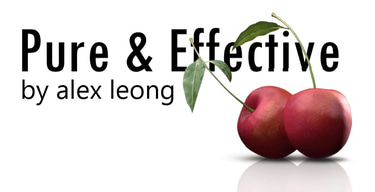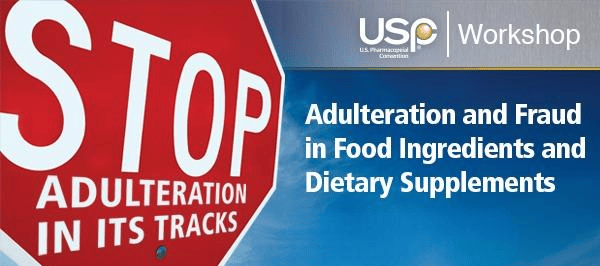The Hidden Truth: Turmeric Adulteration in the Herbal and Spice Industry
Adulteration in the herbal and spice industry is a widespread issue, with manufacturers often compromising quality for profit. While this article focuses on turmeric adulteration, the methods discussed are also commonly applied to other herbs and spices.
Before diving into the specifics of turmeric adulteration, let’s first touch on "active compound depletion"—a deceptive practice that undermines the therapeutic value of herbal products.
Active Compound Depletion:
In some cases, the active compounds in herbs are deliberately removed or reduced. For example, in milk thistle, the active compound silymarin—responsible for its liver-protective properties—is extracted for scientific research or pharmaceutical use. The remaining plant material, which lacks therapeutic value, is then sold to supplement companies at a cheaper price, resulting in products that fail to deliver the promised health benefits. (Sources: 1 and 2)
The growing popularity of certain herbs and spices has led to increased prices in the global market, prompting some suppliers to adulterate these products with cheaper materials to boost profit margins. This not only deceives consumers but also compromises the integrity and therapeutic value of the products they trust.
Findings from Recent Research
Now, let’s turn our attention to turmeric. A 2023 study by researchers from the University of Parma in Italy and the University of Chemistry and Technology in Prague revealed the alarming extent of turmeric adulteration. Using advanced genetic and chemical analysis techniques, the researchers uncovered several methods used to tamper with turmeric. Here are the most common ones:
1. Substitution with Other Curcuma Species:
Mixing turmeric (Curcuma longa) with closely related species like Java turmeric or temulawak (Curcuma zanthorrhiza) and white turmeric or temu putih (Curcuma zedoaria). These substitutions often appear similar but have different chemical properties and health benefits.
2. Addition of Artificial Colorants:
Lead Chromate: A toxic yellow pigment that enhances turmeric's color but poses severe health risks, including neurological damage.
Synthetic Dyes: Unapproved synthetic dyes like metanil yellow may be added to improve the color of low-quality turmeric.
3. Mixing with Other Plant Materials:
Starches: Diluting turmeric powder with cheaper starches (e.g., maize, rice) reduces its purity and medicinal value.
Sawdust or Chalk: Inedible fillers such as sawdust or chalk may be added to bulk up the product.
4. Mixing with Lower-Quality Turmeric:
Combining fresh, high-quality turmeric with old or poor-grade turmeric to misrepresent the product’s quality and benefits.
5. Capsicum Adulteration:
Adding Capsicum species (e.g., bell peppers, chili peppers) to enhance color and bulk, compromising purity.
6. Extract Doping:
Suppliers sometimes add isolated compounds—either synthetic or naturally sourced—to herbal extracts to artificially increase their strength. This practice, known as extract doping, involves adding single molecules to mimic or enhance the natural composition of the extract. Examples include:
Curcumin to low-quality turmeric to artificially increase its curcumin content, lacking the full range of bioactive compounds present in natural turmeric.
Flavonols or flavonol glycosides (plant compounds) added to ginkgo biloba extracts to mimic their natural composition.
Ellagic acid added to pomegranate extracts.
Vitamin C added to acerola (Malpighia emarginata), baobab (Adansonia digitata), and other vitamin C-rich extracts.
Animal fat derivatives added to saw palmetto (Serenoa repens) extracts to mimic its fatty-acid composition. (Source)
7. Extraneous Matter:
Presence of non-turmeric plant parts (e.g., stems, leaves) to increase weight without improving quality, as defined by ISO 5562:1983.
Health Risks and Impacts
The adulteration of turmeric poses serious health risks. Substitutes like Curcuma zanthorrhiza and Curcuma zedoaria may not provide the same medicinal benefits, potentially leaving consumers unaware of their compromised health. The addition of toxic colorants can lead to severe health issues, and the presence of fillers dilutes the active compounds that make turmeric beneficial. Ultimately, these practices not only threaten consumer safety but can also undermine the reputation of turmeric as a health-promoting spice.
Ensuring Purity and Safety
The issue of turmeric adulteration is part of a larger concern surrounding herb and spice adulteration, which poses significant risks to consumer safety. While sourcing turmeric from reputable suppliers is a vital step, ensuring quality is a shared responsibility that spans the entire supply chain, starting from the farm and extending through processing, packaging, and distribution. Each entity involved plays a crucial role in maintaining high standards, as contamination or adulteration can occur at any stage.
Implementing effective traceability systems can be complex and costly, requiring investment in technology, training, and coordination among all parties involved. However, the long-term benefits far outweigh the challenges. By establishing transparent supply chains, stakeholders can significantly reduce the risk of adulteration, ensuring that consumers receive high-quality, authentic products. This commitment to purity not only safeguards health but also builds trust and loyalty among consumers who increasingly demand transparency in their food choices.
As the herbal and spice industry evolves, ongoing collaboration and innovation will be key to overcoming the challenges of adulteration. Check out my article for more insights on the importance of purity and traceability in botanicals.
Return to:










